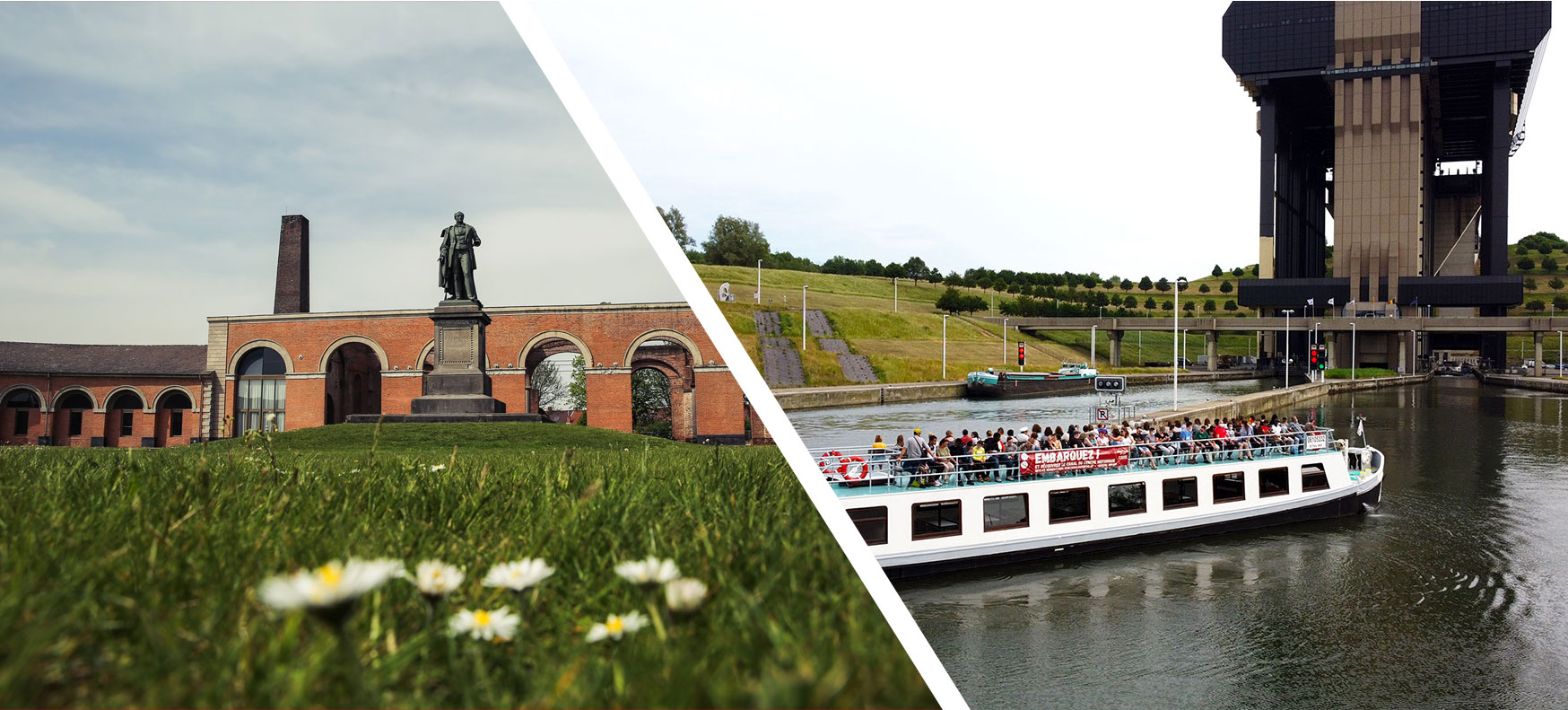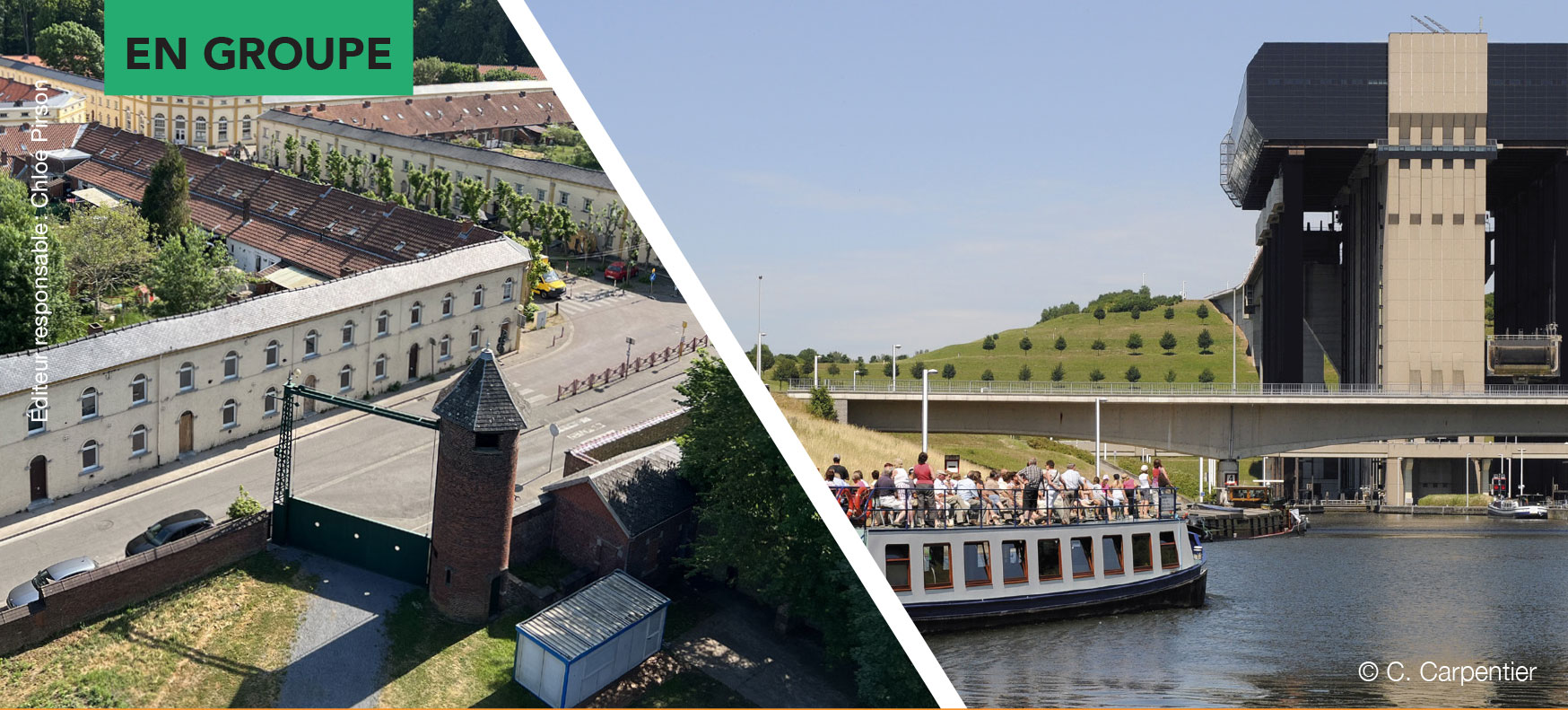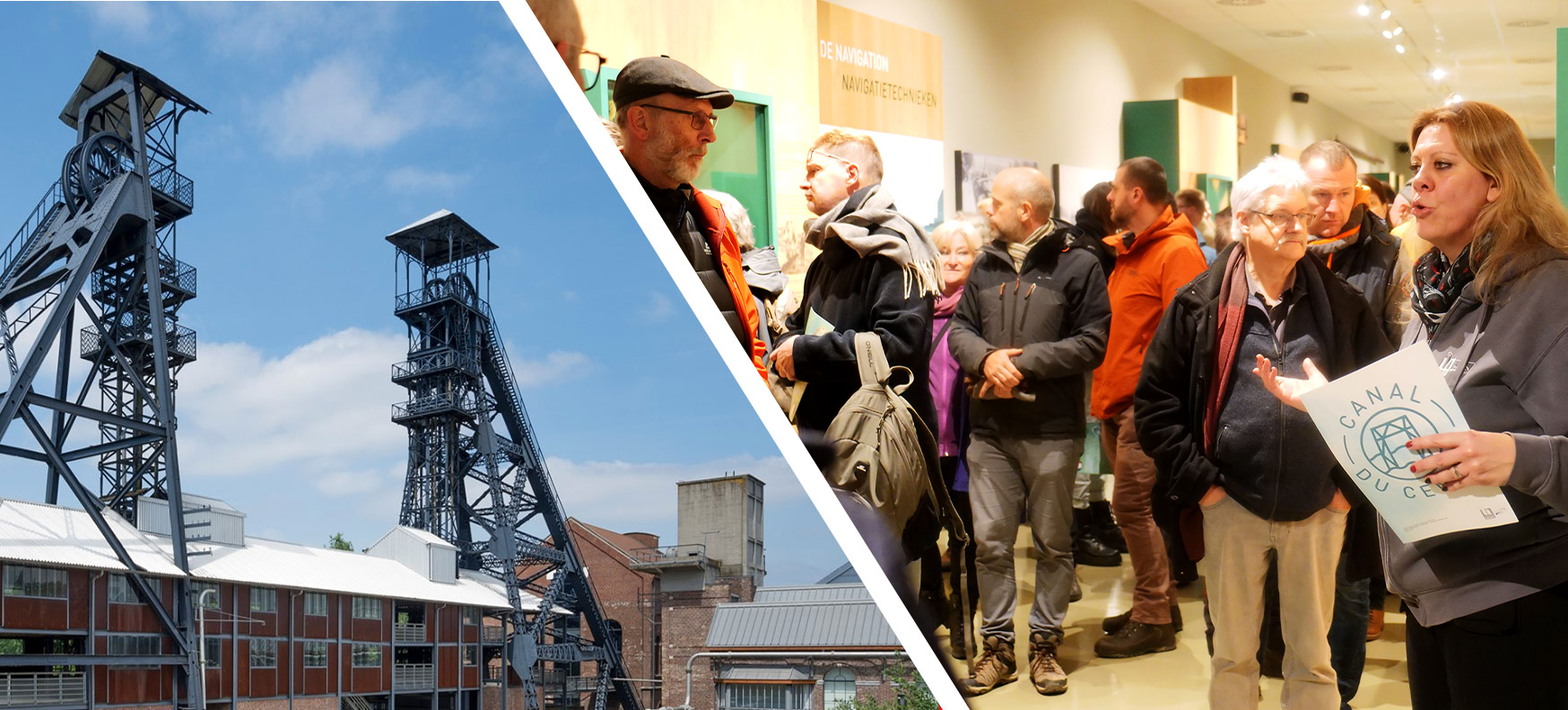
On the Coal Trail
Located in the heart of the Province of Hainaut, just a few kilometers from the cities of Mons and Valenciennes, Grand-Hornu is one of the most beautiful sites of the Industrial Revolution.
A former mining complex built between 1810 and 1830 by Henri De Gorge, a French-born captain of industry, Grand-Hornu is a true city project, a unique example of functional urban planning on the European continent at the start of the Industrial Revolution.
Built in the neoclassical style, it includes the colliery's workshops and offices, the workers' housing estate of some 450 exceptionally comfortable houses for the time, each with its own private garden, and the administrators' residence, known as Château De Gorge.
The workers' housing estate also boasts a school, hospital, public squares, library, dance hall, etc.
To realize his ambitious dream, Henri De Gorge called on the Tournais architect Bruno Renard. For the construction of the complex, he referred to the principles of the community ideal defended by certain theorists and utopians of the time.
A symbol of the coal industry throughout Belgian and French Hainaut, Grand-Hornu was also a fabulous technological laboratory. Henri De Gorge used new extraction techniques and steam engines. What's more, in 1830 he installed the country's first horse-drawn railroad to support the company's economic development.
The Grand-Hornu colliery continued to work hard to win the Battle for Coal, but slowed its pace from 1951, the date of the ECSC Treaty (European Coal and Steel Community), which rationalized production in coal-producing countries.
Le Grand-Hornu remained in operation until 1954. Industrial operations ceased and the site was abandoned. By the end of the 1960s, when a handful of heritage enthusiasts fought to save the site from scheduled destruction, it had become a mere shadow of its former self, devastated by time and vandalism. What's more, in 1969, it became the subject of a Royal Demolition Order aimed at its total demolition.
In 1971, architect Henri Guchez definitively saved the building by buying it. He began the first phase of renovation work and set up his offices here. In 1989, the Province of Hainaut began the second phase of renovation work when it bought the site on the initiative of Claude Durieux, then permanent deputy.
The provincial non-profit organization Grand-Hornu Images set up its offices here in 1984, and has been pursuing its triple mission of heritage, tourism and culture ever since. Grand-Hornu is a member of major international heritage associations, and the association is developing a cultural program on the site to breathe new life into it and help the public rediscover it in a new light.
The exhibitions presented by the association explore the relationship between art and industry; design, industrial creation and the applied arts play a privileged role, very close to the spirit of the place and in resonance with the history of the region.
On December 1, 2014, Grand-Hornu Images became the CID - center for innovation and design at Grand-Hornu. Its ambition is to promote contemporary design through a program of exhibitions and mediation activities highlighting innovation, experimental research, the emergence of new themes and research horizons in the design, architecture and applied arts sectors.
In the early 1990s, the French Community decided to locate its future Musée des Arts Contemporains in Hornu, thus sealing the end of the Grand-Hornu renovation project. In 2002, the Musée des Arts Contemporains - MACS - opened its doors to the widest possible public, showcasing all aspects of international contemporary art.
Having once been one of the jewels in the crown of Belgian industry, the Grand-Hornu site is now one of Belgium's leading cultural venues dedicated to contemporary creation. Every year, it welcomes a large international audience.
After discovering Grand-Hornu, follow the coal road to theStrépy-Thieu elevator, where you can admire the funicular elevator, the largest in Europe, where an interactive exhibition on the "Voies d'Eau" and a historical film will plunge you into the history of these infrastructures. Join us for an enriching and captivating adventure, and discover the historical and technological impact of these exceptional sites.


